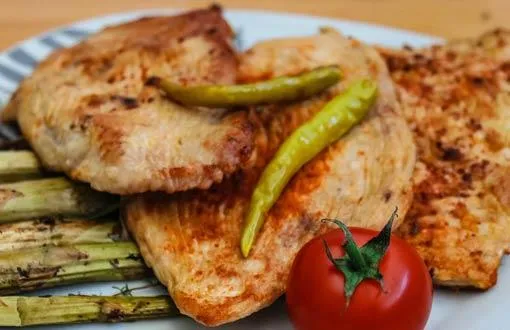Baked Turkey Croquettes
Ingredients
- Wheat flour
- Milk
- Butter
- Salt
- Black pepper
- Nutmeg
- Chopped turkey
- Roasted peppers
- Bread crumbs
- Eggs
- Salt

Preparation
- Melt the butter in a pan.
- Add the flour using a sieve.
- Stir and gradually add the milk.
- Season with nutmeg, black pepper and salt.
- Thicken the béchamel, then add the chopped turkey and roasted peppers. Set aside.
- Shape the croquettes (oval, long or round).
- Coat them in flour, beaten egg and bread crumbs (in that order).
- Brush each croquette with oil and bake for about 20 minutes.
- Serve and enjoy—finger-licking good!
The domestic turkey
Highly valued by the Aztec civilisation
The traditional Christmas turkey has its origins in the wild turkey of the United States and the Mexican guajolote. Both still live in their ancestral lands.
More than 2,000 years have passed since its domestication. Among the Aztec people, especially in what are now the states of Jalisco, Guerrero and Veracruz, everything was used: its prized meat, its eggs and even its feathers for decorative and ornamental purposes.
The common domestic turkey has a lifespan of 10 to 15 years.
In 1498, several specimens of “Indian hens” (domestic turkeys) were shipped from the Americas to Spain, and from there spread across Europe.
Before the 20th century, turkey was a luxury product for the wealthy elite. The rich ate turkey at Christmas feasts while the poor made do with goose by candlelight.
With the advent of intensive farming in the 1940s, turkey production became widespread and prices dropped significantly.
Today, the domestic turkey is a farm bird found all over the world, though it prefers temperate climates.
Males usually stand about one metre tall, their wingspan can reach up to one and a half metres, and they weigh between 8 and 10 kilos. Females are smaller and weigh about half as much.
Turkey meat is low in fat, cholesterol and calories. It is rich in vitamins B1, B2, B3, B5, B6 and B12, folic acid, and minerals such as potassium, magnesium, iron, phosphorus and zinc.
It helps regenerate cells, aids in weight loss and prevents infections from various pathogens. Skin and heart health also benefit from eating turkey meat, which provides great energy.
As always, any dietary or health-related questions should be discussed with your family doctor or a qualified nutrition specialist.
Turkey meat can be prepared in many ways:
Fresh or frozen
Whole or in pieces
As burgers
As sausages
As ham
As smoked cold cuts
Rolled thigh
Breast fillet
In croquettes
How to cook turkey
It is most often roasted in the oven but can also be stewed, grilled or breaded and fried — it’s delicious either way.
Turkeys breed in spring and are omnivorous, feeding on insects, worms, fruits, seeds or granulated feed.
Industrial turkeys are classified into three main categories: heavy, medium and light. The fattening phase begins around the second month and lasts at least 30 days.
About 95% of the world’s turkey meat production takes place in the USA, China, France, Italy, Germany, the UK, Canada and Brazil.
The USA and Israel have the highest per capita annual turkey consumption in the world — between 8 and 15 kilos on average.
In Spain, although the data are not fully reliable, average turkey consumption per person per year is estimated between 3.5 and 5 kilos.
Thanksgiving Day
It is celebrated in Canada on the second Monday of October and in the USA on the fourth Thursday of November.
In the USA, around 45 million turkeys are eaten that evening, costing households over one billion dollars. The traditional accompaniment is cranberry sauce.
Although the holiday has religious origins, it is now entirely secular.
Turkey croquettes are affordable, easy to make and an excellent option for low-calorie diets.
Esta entrada también está disponible en:
![]() Español
Español
